Walking into a financial buffet, where each dish represents a different way to grow your money. Some options are bold and spicy, promising big rewards with a side of risk, while others are mild and steady, offering comfort and safety. These “dishes” are asset classes, the building blocks of investing. Whether you’re just starting out or looking to refine your portfolio strategy, understanding these asset classes is key to creating a balanced, diversified approach that can weather any market storm.
Table of Contents
1. Stocks: Your Slice of the Business Pie
What Are Stocks?
Stocks, often called equities, are shares of ownership in a company. When you buy a stock, you become a part-owner—think of it as grabbing a tiny piece of a company like Apple or Tesla. If the company thrives, your stock’s value can climb, and you might even earn dividends, a portion of the profits paid out to shareholders.
Why Invest in Stocks?
Stocks are the go-to for investors chasing growth. Over time, they’ve historically delivered some of the highest returns among asset classes. But with great reward comes great risk—stock prices can swing wildly based on company performance, market trends, or global events.
Pros of Stocks
- High Return Potential: Long-term averages often hover between 7-10% annually.
- Liquidity: You can buy or sell stocks quickly on exchanges like the NYSE or NASDAQ.
- Dividend Income: Many companies share profits with investors regularly.
Cons of Stocks
- Volatility: Prices can drop fast—sometimes overnight.
- Risk of Loss: If a company tanks, your investment could shrink or vanish.
- Research Required: Picking winners takes time and know-how.
Real-Life Example
Picture this: In 2003, you invest $1,000 in Amazon stock. Fast forward to 2023, and that investment would be worth over $100,000, thanks to Amazon’s explosive growth. But rewind to 2008—during the financial crisis, Amazon’s stock dipped sharply, reminding us of the rollercoaster ride stocks can be.

Expert Insight
“Stocks are the engine of a growth-focused portfolio,” says Jane Doe, a Certified Financial Planner. “They can turbocharge your wealth, but you’ve got to buckle up for the bumps.”
2. Bonds: Lending with a Safety Net
What Are Bonds?
Bonds are like IOUs from governments, cities, or companies. When you buy a bond, you’re lending money to the issuer, who promises to pay you back with interest over time. Think of U.S. Treasury bonds or corporate bonds from giants like Microsoft.
Why Invest in Bonds?
Bonds are the stability champs of the investing world. They’re less thrilling than stocks but offer predictable income and lower risk, making them a favorite for retirees or cautious investors.
Pros of Bonds
- Steady Income: Regular interest payments keep cash flowing.
- Lower Risk: Bonds are generally safer than stocks, especially government-backed ones.
- Diversification: They balance out riskier assets in your portfolio.
Cons of Bonds
- Modest Returns: Expect 3-5% annually—solid, but not spectacular.
- Interest Rate Risk: Rising rates can lower bond values.
- Credit Risk: Issuers could default, though this is rare with top-rated bonds.
Real-Life Example
A 10-year U.S. Treasury bond might yield 2-3% per year. It’s not flashy, but during the 2020 market crash, while stocks plummeted, Treasuries held steady, proving their worth as a safe harbor.
Expert Insight
“Bonds are your portfolio’s anchor,” notes John Smith, an Investment Advisor. “They won’t make headlines, but they’ll keep you grounded when storms hit.”
3. Gold: The Timeless Safe Haven
What Is Gold?
Gold isn’t just jewelry—it’s a precious metal prized as an investment for centuries. You can buy physical gold (coins, bars) or invest via gold ETFs or mining stocks. It’s a classic way to store value.
Why Invest in Gold?
Gold shines during uncertainty. When inflation spikes or markets wobble, investors flock to it as a hedge, driving up its price. It’s not about income—it’s about protection.
Pros of Gold
- Inflation Hedge: Gold often holds value as prices rise.
- Safe Haven: It thrives in crises when other assets falter.
- Diversification: Low correlation with stocks and bonds.
Cons of Gold
- No Income: No dividends or interest here.
- Storage Costs: Physical gold needs a safe place, which isn’t free.
- Price Swings: It’s less volatile than stocks but still moves.
Real-Life Example
In 2008, as stocks crashed, gold prices soared from $800 to over $1,200 an ounce by 2010. Yet, in calmer times—like the early 2010s—its value dipped, showing it’s not always a one-way bet.
Expert Insight
“Gold’s your financial insurance policy,” says Emily Johnson, a Commodity Analyst. “It’s not for everyday gains—it’s for when everything else goes haywire.”
4. Real Estate: Building Wealth Brick by Brick
What Is Real Estate?
Real estate means owning property—think houses, apartments, or office buildings. You can buy directly or invest through REITs (real estate investment trusts), which trade like stocks.
Why Invest in Real Estate?
Real estate blends growth and income. Properties can appreciate over time, and rentals can generate steady cash flow. Plus, it’s tangible—you can touch it, unlike a stock certificate.
Pros of Real Estate
- Appreciation: Property values often rise long-term (6-8% annually).
- Rental Income: Tenants pay you month after month.
- Tangible Asset: It’s a real, physical investment.
Cons of Real Estate
- Illiquidity: Selling takes time and effort.
- High Upfront Costs: Down payments and maintenance add up.
- Market Risk: Values can drop, as seen in 2008.
Real-Life Example
Buy a $200,000 rental home in a hot market, and in 10 years, it might be worth $350,000, plus you’ve pocketed rent along the way. But during the housing crash, many saw values halve overnight.
Expert Insight
“Real estate rewards patience and hands-on effort,” says Michael Lee, a Real Estate Investor. “It’s a marathon, not a sprint.”
5. Cash and Cash Equivalents: The Ultimate Safety Net
What Are Cash and Cash Equivalents?
This includes money in your bank account, savings, or short-term investments like Treasury bills and money market funds. It’s all about accessibility and security.
Why Invest in Cash?
Cash is the king of liquidity and safety. Need money fast? It’s there. Worried about losing value? Cash won’t crash. But it’s not built for growth.
Pros of Cash
- Safety: Virtually no risk of losing principal.
- Liquidity: Instant access for emergencies or opportunities.
- Stability: No wild price swings.
Cons of Cash
- Low Returns: 0-2% in most cases—barely a whisper.
- Inflation Risk: Your buying power erodes over time.

Real-Life Example
A high-yield savings account at 2% keeps your $10,000 emergency fund safe and growing slightly. But after a decade of 3% inflation, that $10,000 feels more like $7,500 in real terms.
Expert Insight
“Cash is your financial cushion,” says Sarah Thompson, a Financial Advisor. “It’s not sexy, but it’s essential for peace of mind.”
6. Cryptocurrencies: The Digital Wildcard
What Are Cryptocurrencies?
Cryptos like Bitcoin and Ethereum are digital currencies powered by blockchain technology. They’re decentralized—no banks or governments control them.
Why Invest in Cryptocurrencies?
Cryptos are the high-octane fuel of investing—offering jaw-dropping potential paired with heart-stopping risk. They’re new, innovative, and divisive.
Pros of Cryptocurrencies
- Sky-High Returns: Bitcoin soared from $1,000 to $60,000 in years.
- Decentralization: Free from traditional financial systems.
- Cutting-Edge: You’re betting on the future of money.
Cons of Cryptocurrencies
- Extreme Volatility: Prices can halve in weeks.
- Regulatory Risk: Governments could crack down.
- Security Issues: Hacks and scams are real threats.
Real-Life Example
Invest $1,000 in Bitcoin in 2017, and by late 2021, it’s worth $60,000. But by 2022, it’s back to $20,000. That’s the crypto rollercoaster—thrilling and terrifying.
Expert Insight
“Crypto’s the wild card every investor dreams of—and fears,” says David Chen, a Crypto Analyst. “It’s high stakes, so play smart.”
7. Commodities (Beyond Gold): Raw Power
What Are Commodities?
Commodities are essentials like oil, silver, wheat, or coffee. You can buy them physically or trade via futures, ETFs, or stocks tied to commodity producers.
Why Invest in Commodities?
Commodities tap into global supply and demand. They’re another diversification tool, often moving differently from stocks and bonds.
Pros of Commodities
- Diversification: They zig when markets zag.
- Inflation Protection: Prices rise with living costs.
- Demand-Driven Gains: Shortages can spike values.
Cons of Commodities
- Volatility: Weather, wars, or surpluses shake prices.
- No Income: You’re banking on price changes only.
- Complexity: Futures trading isn’t beginner-friendly.
Real-Life Example
Oil prices jumped in 2022 amid global tensions, rewarding investors. But in 2014, an oil glut sent prices crashing from $100 to $30 a barrel—timing is everything.
Expert Insight
“Commodities are a bet on the world’s pulse,” says Lisa Wong, a Commodities Trader. “They’re tricky, but they can round out your strategy.”
Comparison Table: Asset Classes at a Glance
Here’s a quick look at how these asset classes stack up:
| Asset Class | Typical Annual Return | Risk Level | Liquidity |
|---|---|---|---|
| Stocks | 7-10% | High | High |
| Bonds | 3-5% | Low to Medium | Medium to High |
| Gold | 5-7% | Medium | High |
| Real Estate | 6-8% | Medium to High | Low |
| Cash & Equivalents | 0-2% | Very Low | Very High |
| Cryptocurrencies | Highly Variable | Very High | High |
| Commodities | 4-6% | High | Medium |
Note: Returns are historical averages and can vary. Risk and liquidity depend on specific investments.
FAQs: Your Asset Class Questions Answered
1. Which is the safest asset class?
Cash and cash equivalents take the crown for safety. With virtually no risk of loss and instant access, they’re perfect for emergencies—though inflation can nibble at their value.
2. What’s the best asset class for beginners?
Start with a mix of stocks and bonds. Stocks fuel growth, while bonds add stability. Low-cost index funds or ETFs make it easy to dip your toes in.
3. How do asset classes help diversification?
Each asset class reacts differently to market shifts. Spreading your money across them—like stocks, bonds, and gold—lowers risk. If one dips, another might rise, keeping your portfolio steady.
4. Is gold a good investment during economic uncertainty?
Absolutely. Gold often shines when stocks falter, acting as a safe haven during downturns or inflationary spikes.
5. Are cryptocurrencies a reliable investment?
They’re a wild ride—huge potential, but unpredictable. Treat them as a small, speculative slice of your portfolio, not a cornerstone.
6. How much of my portfolio should be in real estate?
It varies, but 10-20% is a common range, depending on your goals and risk tolerance. REITs make it easier without buying property outright.
7. What are the risks of investing in commodities?
Price swings from weather, politics, or oversupply can hit hard. Plus, there’s no income—just price appreciation—so timing matters.
Conclusion: Crafting Your Perfect Portfolio
There you have it—the top 7 asset classes laid bare. From the growth-chasing thrill of stocks to the steady calm of bonds, the timeless appeal of gold to the digital buzz of cryptocurrencies, each offers something unique. Real estate builds wealth brick by brick, cash keeps you liquid, and commodities tap into global rhythms. Together, they form the toolkit for a smart portfolio strategy.
The trick? There’s no universal “best” mix. Your ideal blend hinges on your risk appetite, timeline, and dreams—whether it’s retiring early, buying a home, or just growing wealth. Investment diversification is your shield against uncertainty, letting you balance risk and reward.
Call-To-Action
Ready to jump in? Start building a balanced portfolio today. Assess your goals, weigh your risk tolerance, and sprinkle in a variety of asset classes. Not sure where to begin? Chat with a financial advisor. The journey to financial freedom starts with one step—take it now!





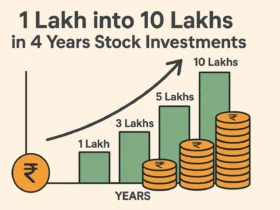




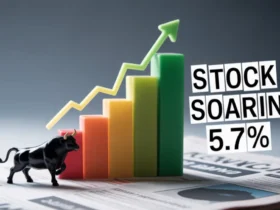








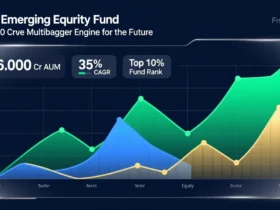
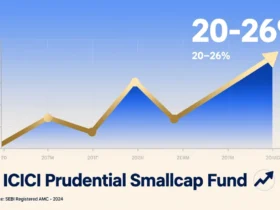


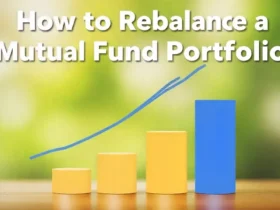


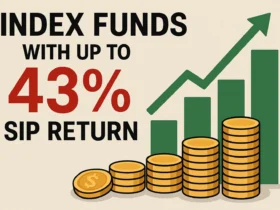




1 Comment